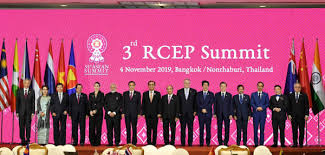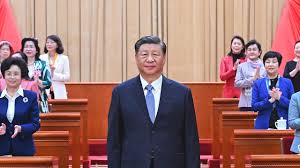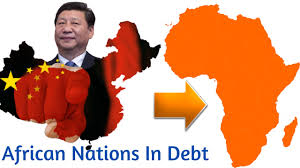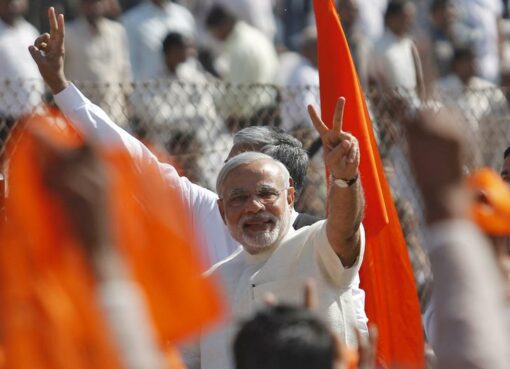India’s ability to wrest a more reasonable deal would strengthen its position to negotiate better with the US and EU and play an effective role in Indo-Pacific region
by Prasad Nallapati
India has taken an unequivocal decision, at least for now, to step out of the Regional Comprehensive Economic Partnership (RCEP).
The reasons for India’s move were clearly enunciated by Prime Minister Narendra Modi himself. “The present form of the RCEP Agreement does not fully reflect the basic spirit and the agreed guiding principles of RCEP.” “It also does not address satisfactorily India’s outstanding issues and concerns. In such a situation, it is not possible for India to join RCEP Agreement,” Modi told the ASEAN+ summit on November 4 in Bangkok.
India’s experience with many of its free trade agreements has not been very pleasant. It has separate Free Trade Agreements with the ten-member ASEAN group and some RCEP nations like Japan and South Korea. India has a merchandise trade deficit with 11 of the 15 members of the RCEP totaling $ 107.28 billion. China alone accounts for $ 54 billions of this deficit. India’s overall deficit in 2018-19 was $184 billion. Thirty-four per cent of India’s imports came from the RCEP region, while only twenty one percent of its exports went there.
Export councils, industrialists and farmers’ unions, besides opposition parties, strongly opposed signing new FTAs as they were destroying domestic industry without adding any benefit to Indian economy. They have pointed to a NITI Aayog report which showed that the utilization rate of current trade deals by Indian exporters remain very low (between 5 per cent and 25 per cent). As a result, the trade deficit with the proposed RCEP nations has increased from $7 billion in 2004 to $78 billion in 2014.
The Finance Ministry, while assessing the shortcomings of each existing FTA, have found that India’s major FTAs constituted only 11 per cent of the total trade but they contributed up to 23 per cent of trade deficit. There is huge revenue loss due to spiraling trade deficit.
As a result, the Modi government has been very cautious about protecting India’s core interests in negotiating any new FTAs and is also working to re-negotiate existing ones. China has been the elephant in the room for RCEP negotiations. It is not a fair trader. Its domestic prices are distorted by assorted subsidies, of credit, land and logistics. India’s efforts to access its market have been repeatedly thwarted by non-tariff and other barriers.
India is therefore resisting pressure to treat Chinese imports on par with that of other countries in the RCEP. Unlike the ASEAN countries, India is still handicapped by serious archaic systemic problems which restrict its ability to compete on equal terms with cheap products from China, Australia, New Zealand, etc. It, therefore, wanted concrete assurances and selective procedures allowing it time to adjust to the requirements.
- India had proposed different levels of tariff concessions for China and a discretion to decide on which products it does not want to offer the same tariff concessions to all countries so as to safeguard its domestic industry from cheap imports.
- The proposal for 2014 as the base year for tariff reduction was not acceptable. India’s electronics and mobile industry, for instance, is moving towards self-sufficiency, and a move towards 2014 rates could mean a huge step backwards.
- India sought exemptions from the Ratchet obligations to protect the interests of exporters and importers and bring restrictive measures, if required, in the future. As per this mechanism, if a country signs a trade agreement with another country where it relaxes tariffs and quotas on merchandise exports and imports, it cannot go back on them and bring in measures that are more restrictive. India wants an automatic trigger mechanism to curb sudden surges in imports.
- According to proposed Rules of Origin, imports from ASEAN countries that add minimal value to Chinese made inputs would not qualify for tariff-trade in a hurry.
- Exemptions were also sought for dairy and its products. Farmers in India are small land holders and are unorganized. Dairy cooperatives are mostly run by local farmer communities as an adjunct to farming activity to enhance their daily earnings. Corporate dairy industry of Australia and New Zealand can unfairly target this huge market.
- India wanted a strong agreement on services trade including a deal on easier movement of skilled manpower. In the absence of well grown manufacturing sector in India, services sector is the major engine of growth. According to ILO data, around 58 per cent of India’s workforce is medium-skilled and 16 per cent is high skilled, and to protect their interest is of paramount importance.
- E-Commerce and trade remedies were among other key areas of concern that failed to find satisfactory redressal.
India has thus genuine reasons and wanted more time to thrash out all of these concerns, but China and Malaysia were in the forefront forcing the ASEAN to firmly tell New Delhi to accept what is on the offer or it will be left behind. India’s economic slowdown and its inability to effectively project power as a counterforce to Chinese aggressive posture in the region have not been helpful.
It is a setback for India’s desire to get more integrated with the region as part of its Act East policy, but it is equally detrimental to the interests of other member countries. India is a huge market, growing much faster than most other regions. Japan, Australia and New Zealand do realize this and wanted to accommodate Indian concerns. China too sounded receptive to such concessions.
India cannot get everything it wants and shall be realistic while protecting its most core concerns. It cannot continue to live with archaic industrial base, unproductive agricultural practices and protectionist policies. If Modi wants his pet `Make India’ program and other institutional reforms to succeed, new ideas, advanced technologies and investments must be allowed to flow in with necessary safeguards.
Hence, it is not the end of the day for the RCEP and India. There are likely to be more contacts between now and the next RCEP summit. If they can find a mid-way to satisfy all sides, India could be in the group again making it the world’s largest FTA. For India, it also serves its strategic political agenda of playing a leadership role in the Indo-Pacific region.
India’s ability to wrest a more reasonable deal from the RCEP countries would strengthen its position to negotiate better with the United States, the European Union and other major economies as New Delhi is working toward bilateral trade deals with them. The US and the EU need to understand India’s systemic economic weaknesses and not force upon it unreasonable tariff deductions. They need to allow India time and equip it to gradually evolve its institutional strengths so as to be able to play an effective role in the Indo-Pacific arena.
(Prasad Nallapati is President of the Hyderabad-based think tank, the Centre for Asia-Africa Policy Research, and former Additional Secretary to the Govt of India)




